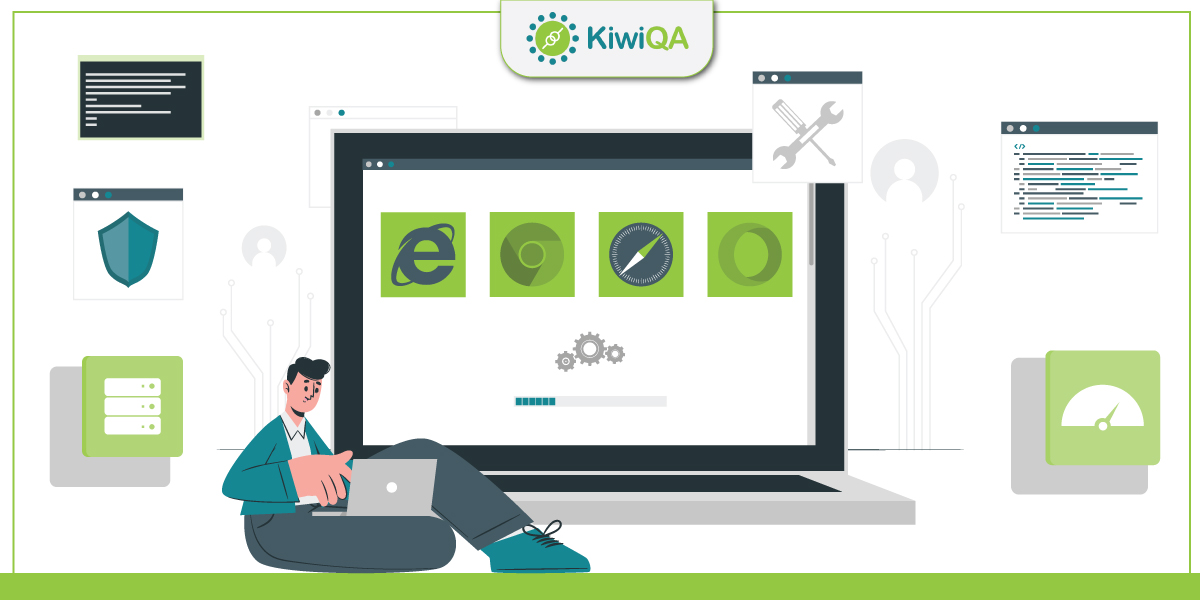Index Surge: Amplifying Your Insights
Stay updated with the latest trends and news across various industries.
Cross-Browser Compatibility: Where Browsers Collide
Unravel the mystery of cross-browser compatibility! Discover tips to master the web and ensure a seamless experience across all browsers.
Understanding Cross-Browser Compatibility: Key Concepts Explained
Cross-browser compatibility refers to the ability of a website or web application to function correctly across different web browsers. Given the variety of browsers available today, such as Google Chrome, Mozilla Firefox, Safari, and Microsoft Edge, ensuring that your website performs consistently on all platforms is crucial for providing a seamless user experience. Factors that can affect compatibility include differences in rendering engines, varying support for HTML, CSS, and JavaScript standards, and diverse interpretations of web protocols. It’s essential to regularly test your site on multiple browsers to identify and resolve issues related to cross-browser compatibility.
To achieve cross-browser compatibility, developers can implement several best practices. Here are key concepts to consider:
- Progressive Enhancement: Focus on building a baseline experience that works on all browsers, then enhance the experience for modern browsers.
- Graceful Degradation: Start with a full-featured version and ensure that essential functionality remains available in older browsers.
- Responsive Design: Use flexible layouts and media queries to ensure your site looks great on any device.
By understanding and applying these techniques, you can significantly reduce the likelihood of encountering compatibility issues, ensuring that your website is accessible and functional for all users.

Top 10 Common Cross-Browser Issues and How to Fix Them
Creating a website that functions seamlessly across different browsers can be a daunting task for developers. Cross-browser issues arise when web pages behave inconsistently on various browsers such as Chrome, Firefox, Safari, and Internet Explorer. These discrepancies can lead to broken layouts, functionality problems, and a poor user experience. It’s essential to identify the most common issues and understand how to resolve them. Below are some of the top challenges faced by web developers today:
- CSS Styling Differences: Different browsers interpret CSS rules in unique ways, leading to inconsistent appearances. To fix this, utilize a CSS reset or normalize stylesheets to create a more uniform baseline across browsers.
- JavaScript Compatibility: Certain JavaScript features may not be supported in all browsers. Use feature detection libraries such as Modernizr to ensure compatibility.
- HTML Element Support: Some HTML5 elements may not be recognized by older browsers. Employing polyfills can provide support where necessary.
- Viewport and Responsive Design: Variances in the handling of viewport units can cause layout shifts. Always test your responsive designs across multiple devices and browsers.
- Rendering Speed: Browsers may differ in rendering speed, impacting the overall performance of the site. Optimize images and scripts to enhance load times.
How to Test Your Website Across Different Browsers: A Step-by-Step Guide
Ensuring your website performs consistently across different browsers is crucial for providing a seamless user experience. Browser testing can help identify any discrepancies in layout, functionality, and load times. Start by compiling a list of browsers to test, such as Google Chrome, Mozilla Firefox, Safari, and Microsoft Edge. Once you have your list, you can utilize both manual and automated testing methods. For manual testing, open your website in each browser to observe any notable differences. Automated tools, like BrowserStack or CrossBrowserTesting, can save time by allowing you to simulate your website across multiple browsers with a single click.
After identifying potential issues, create a detailed testing checklist to address the inconsistencies you've found. This checklist could include items such as verifying responsive design, checking for broken links, and confirming that all multimedia elements function correctly. Be sure to involve multiple devices and screen sizes in your testing process to ensure comprehensive coverage. Finally, document any fixes and re-test your website until you achieve a consistently high-quality experience across all browsers. Following this step-by-step guide will not only improve user satisfaction but also enhance your website’s SEO performance.